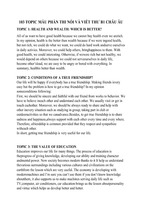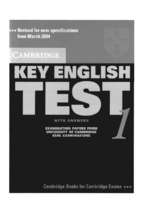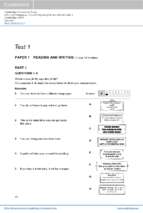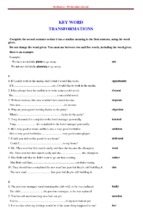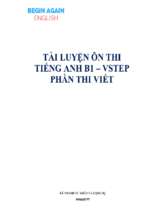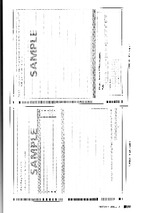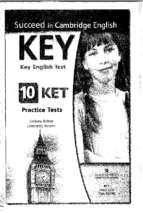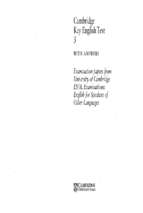VIETNAM NATIONAL UNIVERSITY, HANOI
VIETNAM JAPAN UNIVERSITY
-----------------------
NGUYEN THI HAI YEN
THE EFFECT OF OVERTIME WORKING
ON BURN OUT, ENGAGEMENT AND
INTENTION TO LEAVE OF
MANUFACTURING WORKERS IN
VIETNAM
MASTER'S THESIS
BUSINESS ADMINISTRATION
Hanoi, 2020
VIETNAM NATIONAL UNIVERSITY, HANOI
VIETNAM JAPAN UNIVERSITY
-----------------------
NGUYEN THI HAI YEN
THE EFFECT OF OVERTIME WORKING
ON BURN OUT, ENGAGEMENT AND
INTENTION TO LEAVE OF
MANUFACTURING WORKERS IN
VIETNAM
MAJOR: MASTER OF BUSINESS ADMINISTRATION
CODE: 8340101.01
RESEARCH SUPERVISORS:
Assoc.Prof. Dr. KODO YOKOZAWA
Dr. DO XUAN TRUONG
Hanoi, 2020
ACKNOWLEDGMENT
I would like to express my deep gratitude to Dr. Do Xuan Truong and Assoc.
Pro. Dr. Kodo Yokozawa, my research supervisors, for their patient guidance,
enthusiastic encouragement and useful advice of this research work.
I would also like to thank VJU, YNU and JICA for giving me the opportunity to
study, practice and research at YNU, where there are excellent lecturers and
adequate facilities to study. My grateful thanks are also extent to other lecturers in
the MBA faculty for listening and giving me critiques to complete the research
further.
I am particularly grateful for the assistance given by Ms. Huong - MBA
program assistant, IPO office staff - YNU and volunteer support team in Japan to
prepare and support us during all presentation and follow up research as well as
study activities. I would also like to extend my thanks to Mr Hao for sharing us his
experience and also basic knowledge for doing a thesis.
Finally, I wish to thank my parents for their support and encouragement through
out my study.
ABSTRACT
In the context of controversy surrounding the issue of increasing maximum
overtime hour in Vietnam, the study was conducted to clarify the effects of
overtime on workers' intention to leave their jobs. This research aims to explain the
relationship between overtime hour, burnout, engagement and intention to leave
organization. The study was conducted by online surveys targeting workers who are
working in manufacturing companies in Vietnam. There were 465 responses, but
only 139 valid questionnaires were selected for data analysis. Results obtained from
linear and quadratic analysis have drawn conclusions about both positive and
negative roles of working overtime hour. All 6 hypotheses describing relationships
between 4 variables including working overtime hour, burnout, engagement and
intention to leave organization are accepted. There are 4 hypotheses matching result
from previous research in the Job demand resource model on the relationship
between burn out, engagement and intention to leave. In addition, the study
confirmed both the positive and negative roles of over time hour: Working overtime
hour has positive relationship with burn out which lead to negative impact on
employee well-being such as intention to leave; working overtime hour have
quadratic relationship with engagement which reduce intention to leave. The
findings may suggest managers to arrange and allocate overtime appropriately, as
well as the government to introduce overtime laws and resolve existing disputes.
Table of Contents
CHAPTER 1: INTRODUCTION ................................................................................. 1
1.1 Rationale: .......................................................................................................... 1
1.2 Research objective ............................................................................................ 3
1.3 Research scope .................................................................................................. 3
1.4 Research structure ............................................................................................. 3
CHAPTER 2: LITERATURE REVIEW ...................................................................... 5
2.1 Working overtime hour ..................................................................................... 5
2.1.1 Definition ................................................................................................. 5
2.1.2 Related Research...................................................................................... 6
2.2 Intention to leave ............................................................................................... 9
2.2.1 Definition ................................................................................................. 9
2.2.2 Related research ..................................................................................... 11
2.3 Job Demand Resource model.......................................................................... 15
2.4 Research question: ............................................................................................ 18
2.5 Hypothesis development and conceptual model. ............................................ 18
2.5.1 Hypothesis development ........................................................................ 18
2.5.2 Conceptual Model .................................................................................. 20
CHAPTER 3: RESEARCH METHODOLOGY ........................................................ 22
3.1 Research process ............................................................................................. 22
3.2 Sample design ................................................................................................. 22
3.3 Measuring........................................................................................................ 23
i
CHAPTER 4: DATA ANALYSIS ............................................................................. 27
4.1 Data description .............................................................................................. 27
4.2 Reliability analysis .......................................................................................... 28
4.2. Confirmatory Factor Analysis (CFA) ............................................................ 30
4.2.1 CFA analysis of Engagement ................................................................ 30
4.2.2 CFA analysis of Burn out ...................................................................... 34
4.2.3 CFA analysis of ITL: ............................................................................. 36
4.3 Creating a representative variable:.................................................................. 38
4.4 Pearson correlation analysis ............................................................................ 38
4.5 Regression Analysis ........................................................................................ 40
4.5.1 Regression Analysis of the impact of Working overtime hour on Burn
out ................................................................................................................... 40
4.5.1 Regression Analysis of the impact of Working overtime hour on
Engagement..................................................................................................... 41
4.5.3 Regression Analysis of the impact of Engagement on Burnout ............ 43
4.5.4 Regression Analysis of the impact of Burnout on Engagement ............ 44
4.5.5 Regression Analysis of the impact of Burn out on ITL. ........................ 45
4.5.6 Regression Analysis of the impact of Engagement on ITL ................... 46
4.6 Hypothesis tested results ................................................................................. 48
CHAPTER 5: CONCLUSION AND DISCUSSION ................................................. 49
5.1 Conclusion ...................................................................................................... 49
5.2 Discussion ....................................................................................................... 50
5.3 Implication ...................................................................................................... 52
ii
5.4 Limitation and future research direction ......................................................... 54
REFERENCE .............................................................................................................. 55
APENDIX ................................................................................................................... 61
iii
LIST OF TABLES
Table 2.1: Definition of ITL ............................................................................... 10
Table 3.1: The content of measuring items ......................................................... 24
Table 3.2: Likert scale of ITL ............................................................................. 25
Table 3.3: Likert scale of Burn out and Engagement ......................................... 26
Table 4.1: Data description ................................................................................. 27
Table 4.2 Reliability analysis .............................................................................. 29
Table 4.3: KMO and Bartlett's Test of Virgo ..................................................... 31
Table 4.4: Total Variance Explained of Virgo ................................................... 31
Table 4.5: Component Matrix of Virgo (Rotated) .............................................. 31
Table 4.6 : KMO and Bartlett's Test of Dedication ............................................ 32
Table 4.7: Total Variance Explained of Dedication ........................................... 32
Table 4.8 : Component Matrix of Dedication (Rotated) ..................................... 32
Table 4.9: KMO and Bartlett's Test of Absorption ............................................. 33
Table 4.10: Total Variance Explained of Absorption ......................................... 33
Table 4.11: Component Matrix of Absorption (Rotated) ................................... 33
Table 4.12 : KMO and Bartlett's Test of Burn out.............................................. 34
Table 4.14 : Component Matrix of Burn out (Rotated) ...................................... 35
Table 4.15: Total Variance Explained of Burn out (after removing B9) ............ 35
Table 4.16: Component Matrix of Virgo (Rotated, after remove B9) ................ 36
Table 4.17: KMO and Bartlett's Test of ITL ...................................................... 36
Table 4.18 : Total Variance Explained of ITL .................................................... 37
iv
Table 4.19: Component Matrix of ITL (Rotated) ............................................... 37
Table 4.20: Pearson Correlation statistic ............................................................ 39
Table 4.21: Regression Analysis Summary of Working overtime hour and Burn
out…………. ................................................................................................ 40
Table 4.22: Regression Analysis Summary of the impact of Working overtime
on Engagement ............................................................................................. 42
Table 4.23: Regression Analysis Summary of impact of Engagement on Burn
out……….… ................................................................................................ 44
Table 4.24: Regression Analysis Summary of impact of Burn out on
Engagement 45
Table 4.25: Regression Analysis Summary of impact of Burn out on ITL ........ 46
Table 4.26: Regression Analysis Summary of impact of engagement on ITL ... 47
Table 4.27: Hypothesis tested results.................................................................. 48
v
LIST OF FIGURES
Figure 2.1: Relationship between Human Resource Value, ESE and Employee
ITL (Tzafrir et al., 2015) ............................................................................... 11
Figure 2.2: Turnover intention model (Muliawan, 2009) ................................... 12
Figure 2.3: Model of Personality and Turnover Intention (Jeswani & Dave, 2012)
....................................................................................................................... 13
Figure 2.4: Theoretical model of turnover and INL among psychiatric nursing
personnel (Alexander, 1998)......................................................................... 14
Figure 2.5: JDR model (Bakker & Demerouti, 2007) ........................................ 16
Figure 2.6: Conceptual model ............................................................................. 20
Figure 3.1: Research Process .............................................................................. 22
LIST OF GRAPH
Graph 4.1: Linear graph of the impact of Working overtime on Burn out ............... 41
Graph 4.2: Quadratic graph of the impact of Working overtime on Engagement .... 43
vi
LIST OF ABBREVATIONS
CFA
Confirmatory Factor Analysis
DCM
Demand-control model
ERI
Effort-reward imbalance model
JDR
Job Demand Resource Model
ITL
Intention to leave
SPSS
Statistical Package for the Social Sciences
vii
CHAPTER 1: INTRODUCTION
1.1 Rationale:
During the current period of economic development, working hours of workers
are a very serious social issue. The situation that workers have to work overtime
exceeding policy is very common. Therefore, in many factories in Vietnam, there
have been many strikes of workers to claim labor rights. The last days of May 2018,
due to forced overtime 74 hours per month and having to work in an unsecured
environment, 500 garment workers in Tam Dan industrial cluster (Phu Ninh district,
Quang Nam) quit their jobs to claim benefits (Trung Kien, 2018). Many workers
reported that, fin the period of time after Lunar new year, they were forced to work
overtime from Monday to Friday, adding 3.5 hours a day, including Sundays. This
makes them extremely tired and exhausted. By the end of March 2018, nearly 4,000
workers of Yamani Dynasty Co., Ltd. located in Nam Hong Industrial Cluster (Nam
Truc District, Nam Dinh) simultaneously quit their job, asking the company's
leaders to improve the working conditions, including non-overtime work over 300
hours/year (Van Dong, 2018).
The leaving of workers greatly affect the business. The interrupted factories
and production lines cause production stagnation and significant damage.
Recruiting new workers and retraining also cause a lot of loss of time and money.
Besides, now government of Vietnam are arguing about making the rule about
maximum hour for working overtime. Some of them think that: Currently, the total
number of overtime hours of Vietnamese businesses is limited to about 300 hours much lower than that of competing countries such as Bangladesh 408 hours, China
432 hours, Indonesia 728 hours (Le, 2019). Lots of businesses also want to increase
overtime hour to be able to keep up with the work progress. Moreover, in reality,
many workers are willing to work overtime, and even look for jobs that give them
opportunity to work overtime on the grounds that they want to earn extra income.
1
According to the results of the salary, income, expenditure and life survey of
employees in 2018 announced by the Vietnam General Confederation of Labor and
the Institute of Workers - Union, the basic monthly salary of employees (if they
work full time, full working days) received an average of 4.67 million dong/month.
However, workers have to spend a lot of money to ensure their life, while with
many people the fixed salary is not enough to cover their own lives and their
families so they need to work overtime and earn extra income. In addition to basic
wages (accounting for 84.4%), workers also receive overtime pay, attendance
money and other allowances, supports from businesses. With this additional amount
and basic salary, the average income of workers (excluding meals) increases to
nearly 5.53 million VND / month. Many workers have given up unstable outside
jobs to apply for jobs in industrial parks and have worked with the company for a
long time because of stable salary, having conditions to increase their income if
they work hard. On the other hand, they are regularly involved in activities to take
care of their spiritual life organized by unions. In addition to income, some people
also feel that having more overtime will reduce the time pressure to achieve the
target. Thus, Increasing maximum overtime hour is desired by both workers and
businesses.
This fact would suggests that working long hours may be the reason for factory
workers to leave. However, how that effects workers‟ decision to leave is far from
clear. Overtime working provide workers with additional income and usually at
higher pay rates. So why workers oppose overtime working and even leave? It can
be seen that may overtime is affecting the employee‟s intention to quit in both
negative and positive ways simultaneously.
So far, there have been a number of studies explaining separately the
correlation between overtime and burnout (Rupert, Hartman & Miller, 2013; Yoder,
2010; Leiter & Maslach, 1988; Maslach, Schaufeli & Leiter, 2001), employees‟
health (Johnson & Lipscomb, 2006) or overtime and satisfaction, engagement with
businesses (Watanabe & Yamauchi, 2018), that lead to leaving intention. Most of
2
the above studies only looked at individual effects, either negative or positive on
employees intention to leave, but were not generalized when both had simultaneous
impacts on ITL.
This thesis investigates the effect of overtime working on Vietnamese worker‟s
intention to leave through cause-effect relationship between working overtime, burn
out, engagement and intention to leave .
1.2 Research objective
The objective of this research is to explain how working overtime will affect
employees‟ intention to leave organization.
The expected result can be implication for human resource departments or
managers to apply and organize overtime hour appropriately to retain employees
and achieve efficiency in their work for long term. The government also can refer
this information to discuss and make more reasonable rules.
1.3 Research scope
The study was conducted in Vietnam and focused on the human resources who
are workers at manufacturing companies. Currently, the issue of strikes and
turnover of workers occurs mainly in manufacturing companies, the increase in
overtime causing controversy for the government also revolves around this object.
1.4 Research structure
Chapter 1: Introduction
This chapter introduces practical motivation, social problem that have inspired
this research, research objective, research question and research scope.
Chapter 2: Literature review
This chapter introduces previous research, fundamental theory related to the
topic. This part also explains research model based on research gap and hypothesis
development.
3
Chapter 3: Research methodology
This chapter describes method to conduct research in detail, including research
process, sample design, questionnaire design, and data collection method.
Chapter 4: Data analysis
This chapter presents the data analysis steps, description of data collected, the
index results obtained when analyzing data by SPSS software. This section will also
show which hypothesis is accepted.
Chapter 5: Conclusion and discussion
This chapter draws conclusions, suggests some implications from findings of
this research. This part also discuss some limitations of this study and suggest
further search of this topic.
4
CHAPTER 2: LITERATURE REVIEW
2.1 Working overtime hour
2.1.1 Definition
Pursuant to the laws of Vietnam:
According to Article 104 of Law No.10/2012/QH13 - Ministry of Labor:
Regulations on normal working hours as follows:
“ - Employers have the right to set working hours by day or week
- If it is calculated by day, the normal working time shall not exceed 8 hours
per day and 48 hours per week.
- If it is calculated by week, the average working time must not exceed 10
hours per day and not more than 48 hours in a week.
- However, the government encourages employers to implement a 40-hour
working per week”
In addition to normal working hours, it is counted as overtime
According to Article 4 of Decree No. 45/2013/ ND-CP stipulating overtime:
“- Overtime hours must not exceed 50% of normal working hours in a day
- When applying the weekly working regulations, the total number of normal
working hours and overtime hours shall not exceed 12 hours/day, 30
hours/month or 200 hours/year.
- Except for some special cases prescribed by the Government, the extra
working hours shall not exceed 300 hours per year (Example: Producing and
processing products for export of textile, garment, leather, shoes, agricultural
processing,
forestry,
fishery;
Producing,
supplying
telecommunications, oil refining; water supply and drainage, etc.”
5
electricity,
2.1.2 Related Research
The problem of working time of workers occurs not only in Vietnam but
also in most economies. This issue has been of interest for a long time so there has
been some research in the past about the effects of working hours on employees.
Recently, Chiara Dall‟Ora (2016) studied about characteristics of shift work
and their impact on employee performance and well being. This research was
conducted between January and March 2015 in all sectors including health-care.
The author wanted to identify how the features of shift work that affect employee's
performance and well being . Results show that many element of shift work impact
on compromised employee's performance and well being such as: Shifts of 12 hours
or longer can cause jeopardized outcomes, there is a relationship between working
more than 40 hours per week and adverse events. Not only focusing on working
hours, but the study also exploited deeply many aspects of shift work and points out
effects of each aspect including working rotating shifts, fixed night shifts, timely
breaks, quick returns. Through this paper Chiara Dall‟Ora also studied the impact of
overtime and mentioned it as a small characteristic of shift work. His research
concludes that working overtime was related to decreased job performance.
In 2014, Stephanie Steinmetz also written paper focusing on the influence
of working-time characteristics and wages on an employee‟s intention to stay. In
this study, the author has built 3 models. In particular, the first and second models
focus on studying the individual effects of each working-time characteristics and
wage-related aspects on the intention to stay, while the third model describes the
relationship between the combination of two factors above and intention to stay.
Sampling conducted through web site surveys resulted in a large number of samples
(N = 5,323), and distribution in many countries. Author conclude that intention to
stay at a organization is negatively affected by working part-time hours, overtime
and a long commuting time with the same employer. Besides confirming the effect
of overtime, the study suggest for employer paying attention to the commuting time
factor. However, from this result, we can not claim that non-standard working hours
6
increase the intention to quit. In Model 2, wage-related characteristics illustrate that
a low wage or low wage satisfaction decreases employee‟s intention to stay. When
applying the combination of 2 factors above in Model 3, the impact of them still
works. Approved relationships in model 3 also demonstrate that consideration about
working and commuting times acts as a supplement to wage satisfaction to increase
employees‟ intention to stay.
Rubery et al. (2005) explored together two issues including working time
and industrial relations. His research exploited the flexibility aspect of working
hours. The results of qualitative fieldwork in six major UK-based organizations
indicate that new working-time distribution blear the previously clear frontier
between work and non-work time and influencing the salary negotiation.
Supporting the findings of Rubery on the positive effects of the flexibility of
working time, Kelliher and Anderson (2009) offered evidence proving that who can
work with flexible time having higher levels of job satisfaction and organizational
commitment than their other colleagues. More specifically, analytical results of both
the interview and questionnaire illustrate that those who work flexibly in this study
were not only generally satisfied with both their jobs and their work-life balance but
also having committed tendencies to the organizations they are working for. Remote
workers confessed that being able to exercise autonomy about where they worked to
make them satisfied. In addition to the impact on satisfaction, interviewees who
reduced hours reported lower levels of strain than those who did not work flexibly.
This is explained that if working hours are not flexible and limited, they will be
under pressure from forcing themselves to complete the work in a short amount of
time.
Unlike previous authors, Hetty van Emmerik and Sanders (2005) had a
different approach to research on working time. Here, the author used the mismatch
between desired and actual number of hours and explores its impact on affective
commitment. Results from 266 respondents within a Dutch Ministry showed a
negative relationship between a higher mismatch of working hours and affective
7
commitment. This study also addresses the moderate role of gender and the type of
work that adjusts the level of mentioned relationship above. Specifically, for female
employees or part-time employees, the negative effect of mismatch will be shown
more strongly.
Different from above studies, Johnson and Lipscomb did not focus on the
impact of time-related issues on the organizational outcomes, but rather the impact
on workers themselves. Their research in 2006 indicated that if employer extend
working time or arrange many irregular hours, laborer easily come to stress, fatigue,
adverse health behavior and chronic outcomes such as cardiovascular and
musculoskeletal disorders.
While the study of Johnson and Lipscomb provides general conclusions
about the impact of working hours on the health and morale of employees. Later
then, there have been many studies on this relationship, but going into more detail.
Lee and Lee (2016) proved that a reduction in working hours significantly decreases
the risk of accidents and decreases the injury rate at the workplace. Their research is
quite favorable and highly reliable because the Korean government has changed the
law on working time during that time. The new law in which the standard weekly
hours were reduced from 44 to 40 has been gradually applied at different times
according to industry and facility size from 2004 to 2011. This change has helped
them getting data and evidence to draw a conclusion that a one-hour cut down in
actual working hours per week (equivalent to 14 minutes per day) lower the injury
rate significantly, by about 8%. There have been more in-depth studies combining
both economic and medical factors related to working hours. Typically, a study by
Pradhan and Shrestha (2011) about the impact of working hours on backache from
gender perspective.
The issue of working hours is a prominent issue in the health sector,
especially for nurses. Therefore, research on the influence of long-hour working on
nurse related issues has been extensively studied. Analysis of Rogers et al. (2004)
from 393 hospital staff nurses in American Nurses Association showed that
8
increasing work time, overtime, and number of hours working per week raise the
number of errors. If nurses work in shifts of 12.5 hours or more will triple the rate
of making mistakes compared to normal working hours.
Many previous studies have shown that long working hours or
irrationalities in time arrangements will lead to negative impacts on both work and
health of employees. But most of these studies have not yet focused on exploring
the role of overtime hours and its both positive and negative effect on employees'
intention to leave an organization.
2.2 Intention to leave
2.2.1 Definition
Intention to leave (ITL) is a concept that has appeared and been studied for
a long time, because this problem emerged very early. It is also known under a
number of other names such as: intention to quit, turnover intention. This concept is
classified into two separate folds: Organization and Profession. In this paper, we
only focus on ITL organization.
The IL is different from the actual behavior of quitting an organization. Several
researchers supposed that ITL can be used as a valid proxy for actual labour quitting
(Muliawan et al., 2009; Tett & Meyer, 1993). The theory of planned behaviour
(Ajzen, 1991) claimed that behavioral intention is a reliable predictor of actual
quitting behaviour. Sustaining for above results, recently there are some studies
illustrated that turnover intention is a important indicator for actual turnover
behaviour (Firth, et al.,2004) and turnover intention is believed to be the most valid
antecedent of actual action (Allen, Weeks & Moffitt, 2005). In addition, Boshoff et
al., (2002) had the similar idea that quitting intention is a dependent variable and
also predictor of the likelihood that an employee will actually leave their company
in the near future. It even has been empirically established in order to prove that
turnover intention is associated with actual behaviour (Byrne, 2005).
9
- Xem thêm -


